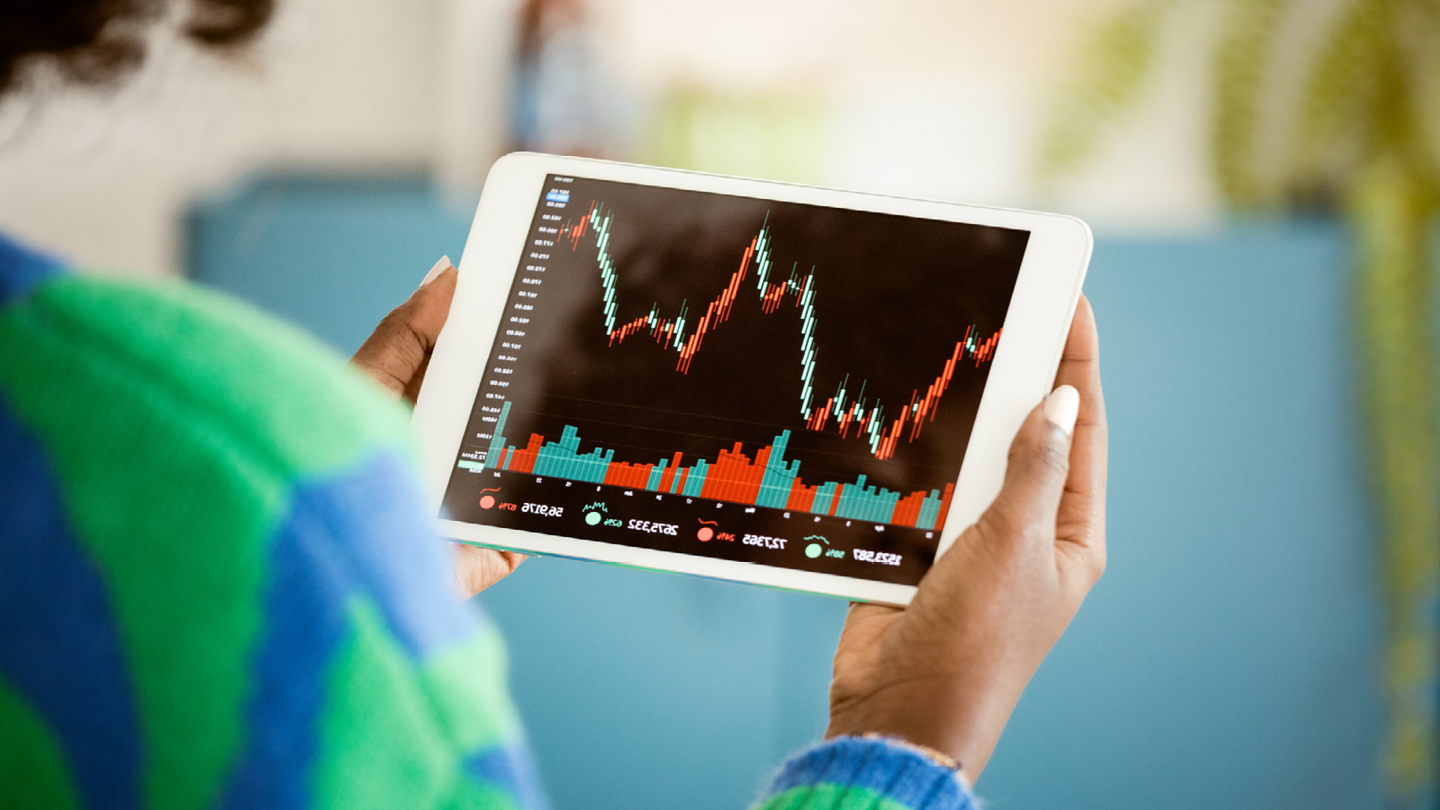The population engaging in financial market investments has expanded substantially over the past decade, making retail investing an increasingly important element of household financial health. In the two research reports below, the Institute expands its coverage of household wealth building, shedding light on risk-taking in retail investor portfolios and behavioral patterns that explain high-frequency decisions to move money into investment accounts. This research builds upon earlier Institute reporting focused on the growing linkages between financial markets and household balance sheets.
Retail risk: Investors’ portfolios during the pandemic. We use new de-identified data on 500,000 investor portfolios 2019− 2023 to analyze how portfolio risk taking evolved throughout the pandemic era. In earlier Institute reports, we focused on checking account flows to investment accounts, which we expand on here for the first time using data on the specific holdings of retail investors. Our data show that portfolios’ exposure to stock market risk increased by 10 percent from the pre-pandemic baseline as of 2023. Investors establishing new accounts during the pandemic took on more risk than cohorts of market entrants before and after the pandemic, suggesting a potentially lasting effect of that episode on risk taking. Echoing prior Institute and academic findings, we see higher portfolio risk metrics for younger individuals and men.
Returns-chasing and dip-buying among retail investors. This analysis seeks to explain month-to-month fluctuations in flows to investment accounts, motivated by the potential for the timing of asset purchases to significantly affect returns on wealth. We use data on transfers from checking accounts to investment accounts of over 10 million individuals 2007−2024. Stock market price action corresponds notably with subsequent transfers to investment accounts, explaining up to 40 percent of variation in monthly investment flows over the full sample window. Lagged stock market gains predict higher transfers to investments (i.e., returns-chasing), and sharp spikes in volatility—often during market downturns—can also lead to large increases in investing flows (i.e., dip-buying). Both trend-chasing and dip-buying dynamics correspond to larger percent changes in investment flows for younger individuals, those with lower incomes, and men—which suggests herdlike behavior that spreads unevenly across the investor population.
For additional context and analysis, earlier Institute research documents the increasingly broad population engaging with financial markets: The rise in retail investing: Roles of the economic cycle and income growth and The changing demographics of retail investors.




